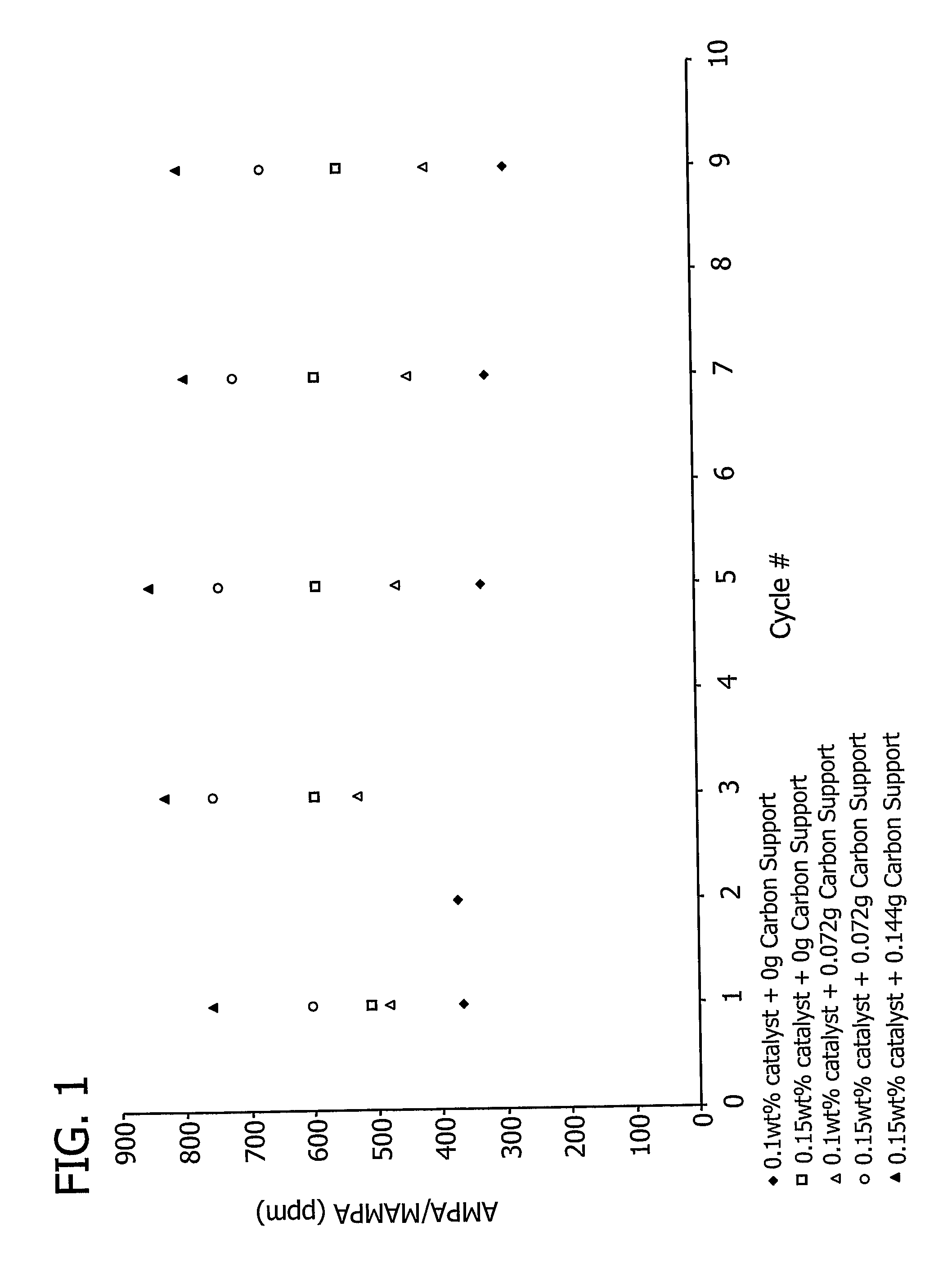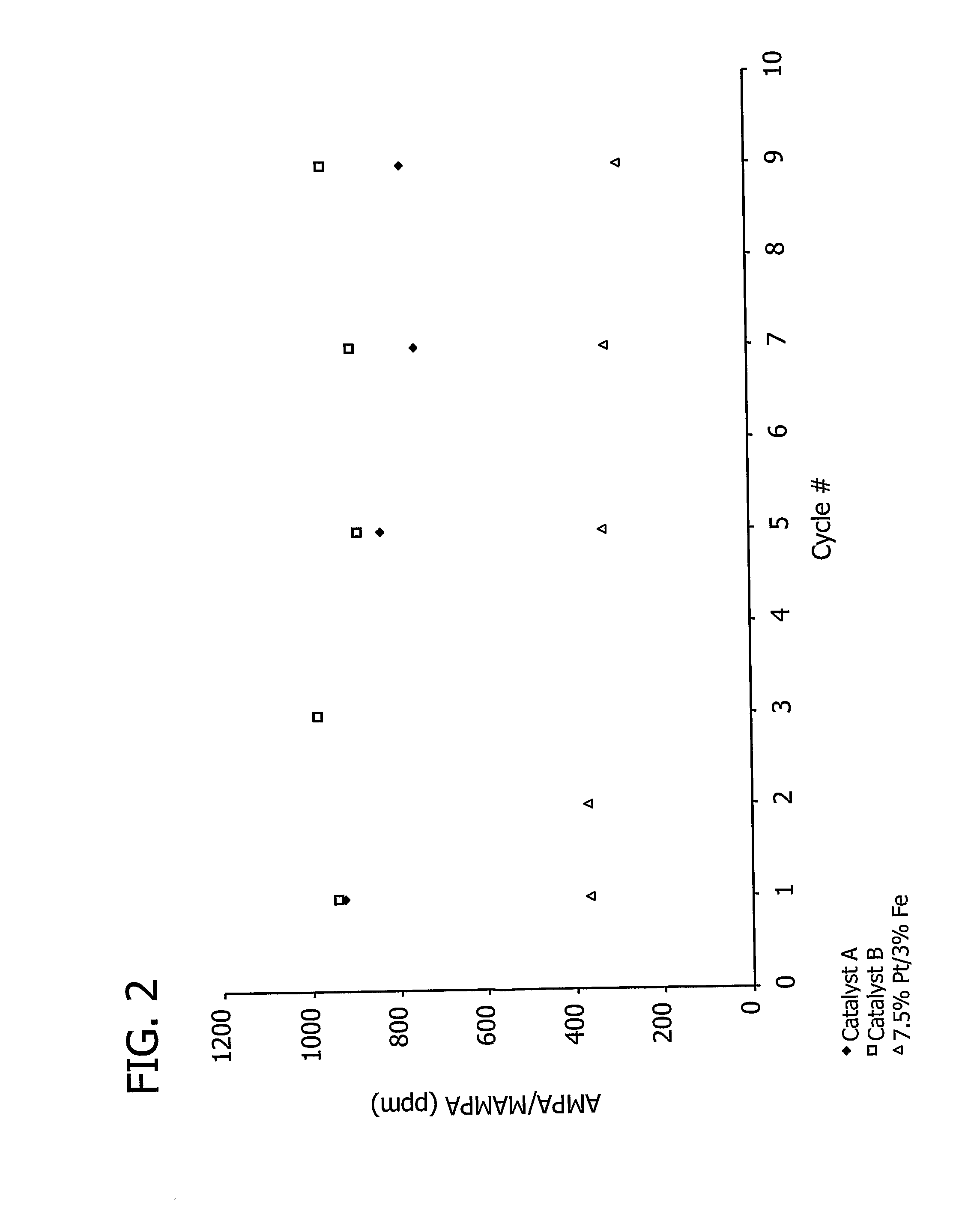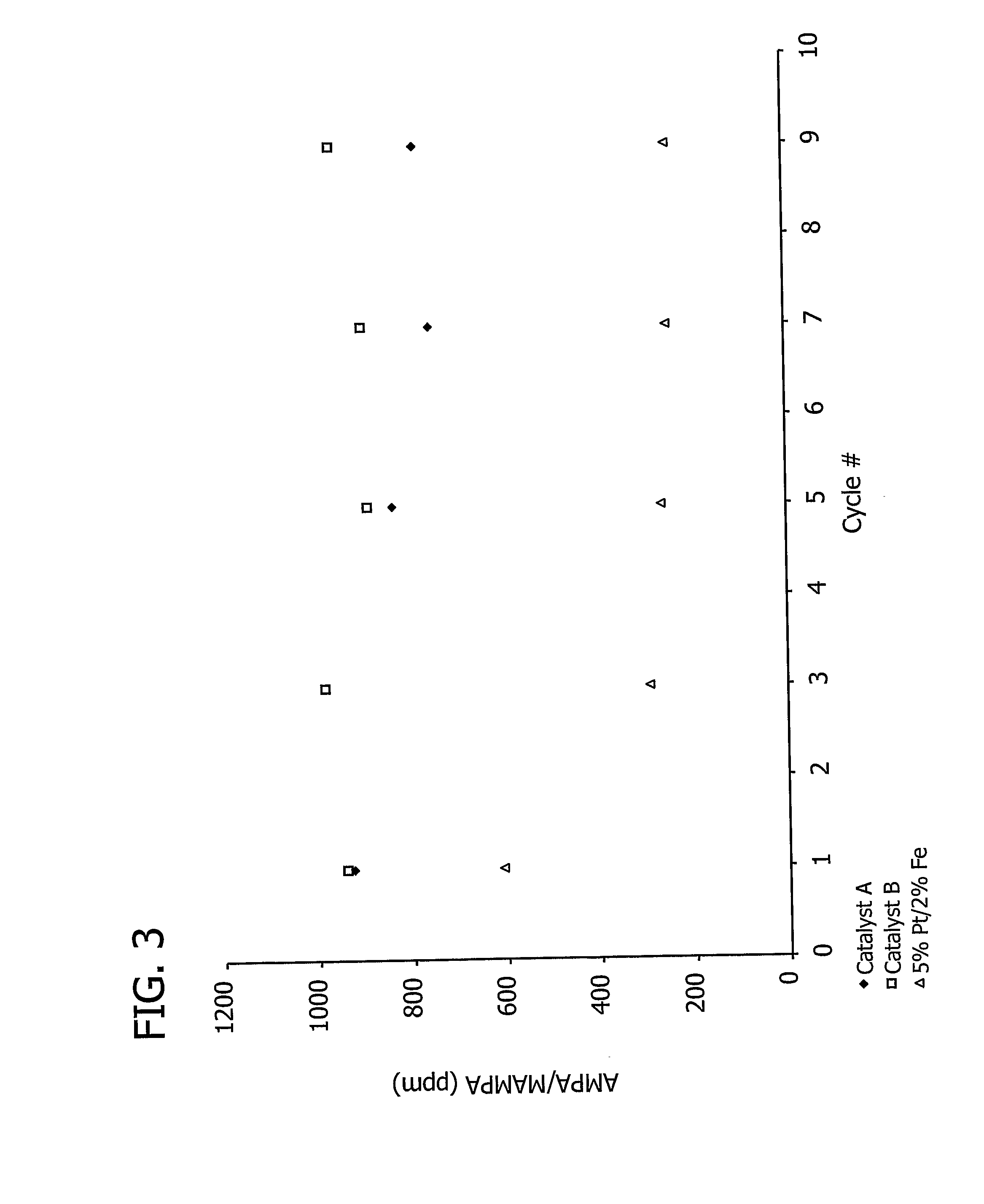Oxidation catalyst and its use for catalyzing liquid phase oxidation reactions
a liquid phase oxidation reaction and catalyst technology, applied in the field of heterogeneous catalysis, can solve the problems of high loss of costly noble metals into the reaction solution, undesirable formaldehyde by-product, and undesirable formaldehyde by-product itsel
- Summary
- Abstract
- Description
- Claims
- Application Information
AI Technical Summary
Benefits of technology
Problems solved by technology
Method used
Image
Examples
example 1
[0180]This example describes a method for preparing a catalyst precursor containing platinum and iron deposited on a carbon support.
[0181]Activated carbon support having a B.E.T. surface area of approximately 1200-1400 m2 / g (available from Norit Americas, Inc. (Atlanta, Ga.)) (approximately 22.5 g) was slurried in deionized water (approximately 150 ml) in a 500 ml baffled beaker for 45 minutes.
[0182]Hexachloroplatinic acid (H2PtCl6) (3.128 g) and iron chloride (FeCl3.6H2O) (1.148 g) were mixed in deionized water (75 ml) and the platinum / iron mixture was added dropwise to the carbon support slurry over the course of 60 minutes. The pH of the resulting platinum / iron / carbon slurry was maintained at approximately 4.4 by co-addition of sodium hydroxide (NaOH) (0.5N). The platinum / iron / carbon slurry was stirred for approximately 60 minutes while its pH was maintained at approximately 4.4.
[0183]The platinum / iron / carbon slurry was heated to approximately 65° C. according the following pH / te...
example 2
[0189]This example describes a method for heat treatment of a catalyst precursor prepared as described in Example 1.
[0190]A 7.5% Pt / 3% Fe catalyst precursor prepared as described in Example 1 (2.5 g) was placed into a tube reactor connected to a gas stream containing hydrogen (5%, by volume) in argon. The catalyst precursor was then heated from approximately 20° C. to 850° C. over the course of approximately 30 to 60 minutes and heated at approximately 850° C. for approximately 30 to 120 minutes.
example 3
[0191]This example demonstrates the effect of the total amount of carbon support on aminomethylphosphonic acid (AMPA) and methyl aminomethylphosphonic acid (MAMPA) formation during the oxidation of N-(phosphonomethyl)iminodiacetic acid (PMIDA) to N-(phosphonomethyl)glycine (“glyphosate”).
[0192]A 7.5% Pt / 3% Fe catalyst, prepared as described above in Examples 1 and 2, was used to catalyze the oxidation of PMIDA to glyphosate.
[0193]One PMIDA oxidation run was conducted in a 200 ml glass reactor commercially available from Ace Glass, Inc. (Vineland, N.J.) containing a reaction mass (139.62 g) which included water (128 g), approximately 8.2% by weight PMIDA (11.48 g) and a catalyst loading of 0.1% by weight (0.14 g). The oxidation was conducted at a temperature of 100° C., a pressure of 60 psig, and an oxygen flow rate of 100 cm3 / minute. Another run in which the reaction mass (139.69 g) included water (128 g), approximately 8.2% by weight PMIDA (11.48 g) and a catalyst loading of 0.15% ...
PUM
| Property | Measurement | Unit |
|---|---|---|
| pressure | aaaaa | aaaaa |
| temperature | aaaaa | aaaaa |
| temperature | aaaaa | aaaaa |
Abstract
Description
Claims
Application Information
 Login to View More
Login to View More - R&D
- Intellectual Property
- Life Sciences
- Materials
- Tech Scout
- Unparalleled Data Quality
- Higher Quality Content
- 60% Fewer Hallucinations
Browse by: Latest US Patents, China's latest patents, Technical Efficacy Thesaurus, Application Domain, Technology Topic, Popular Technical Reports.
© 2025 PatSnap. All rights reserved.Legal|Privacy policy|Modern Slavery Act Transparency Statement|Sitemap|About US| Contact US: help@patsnap.com



